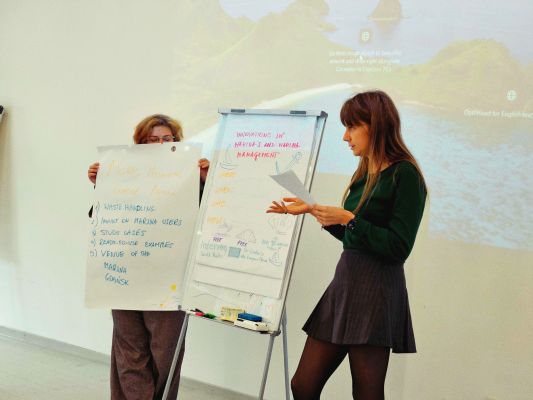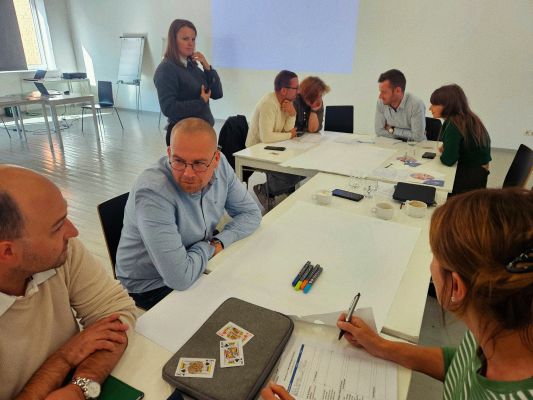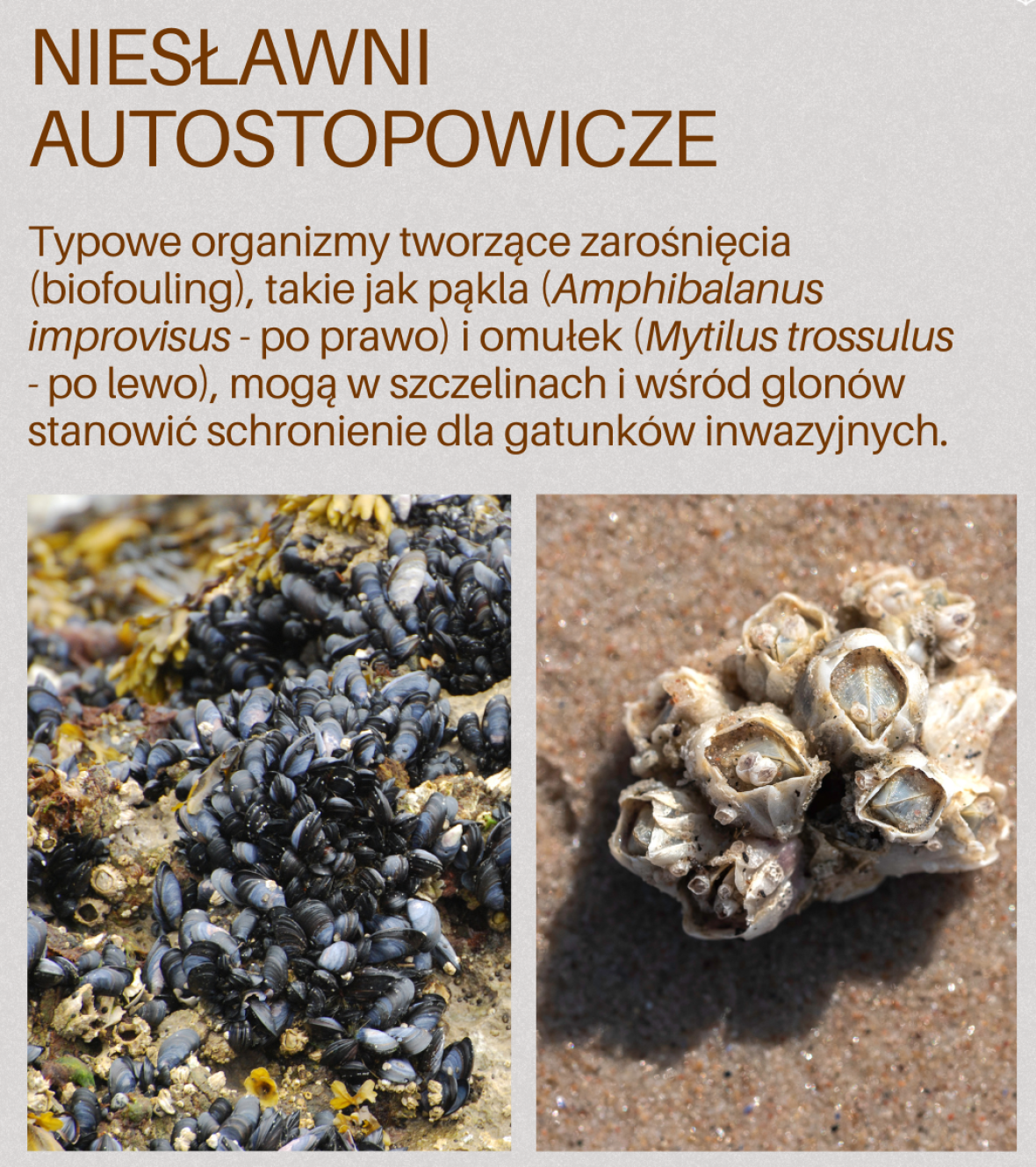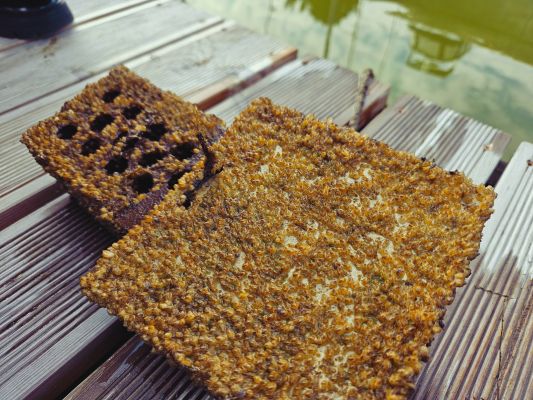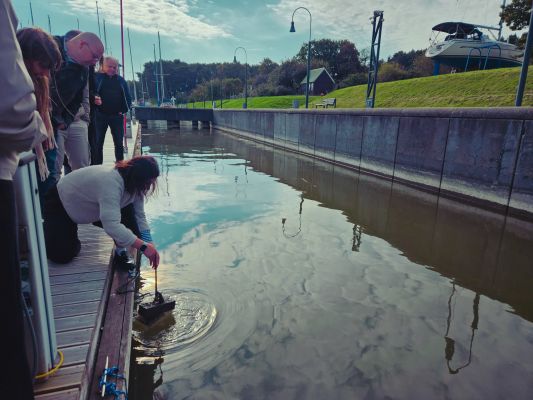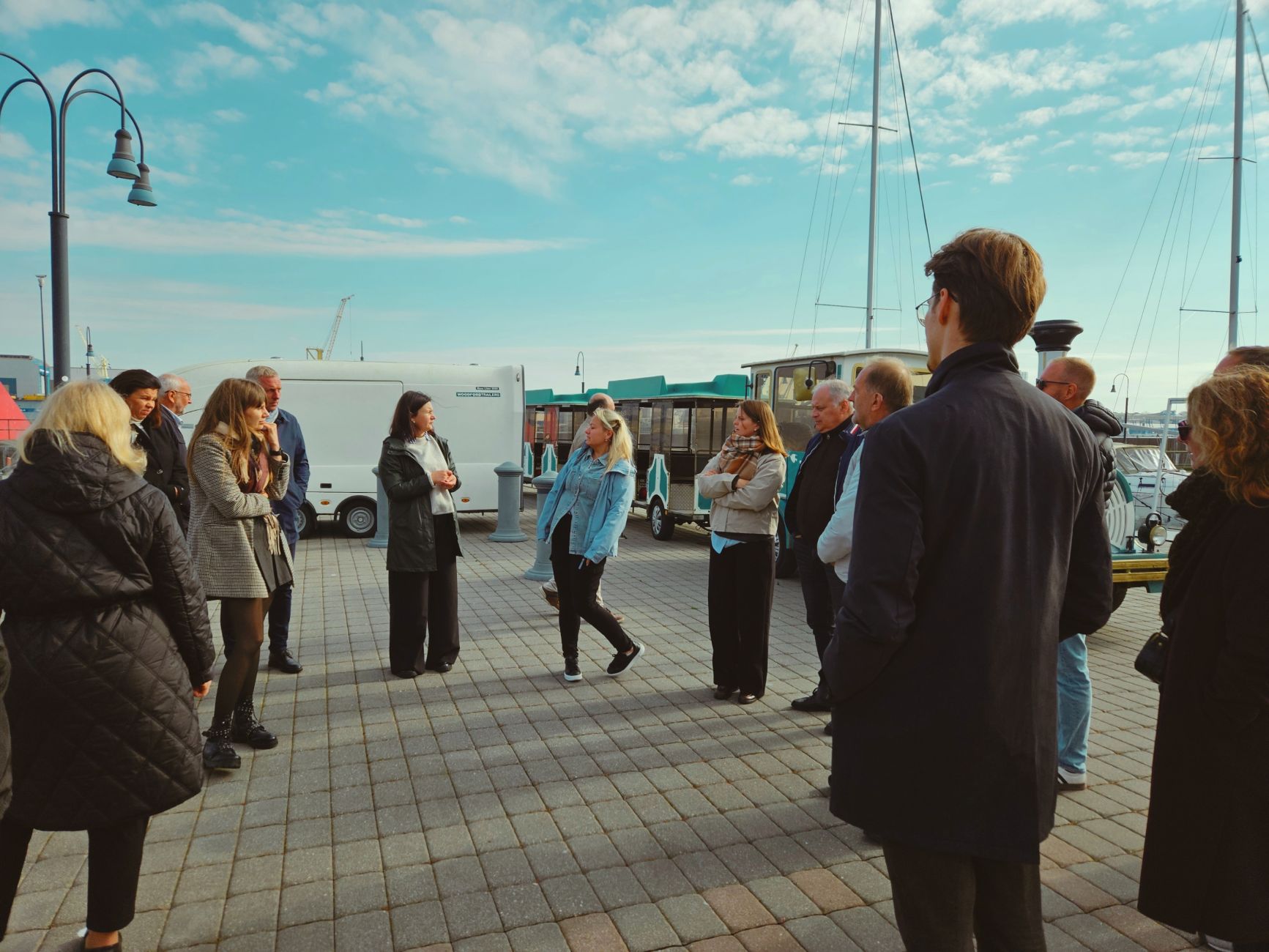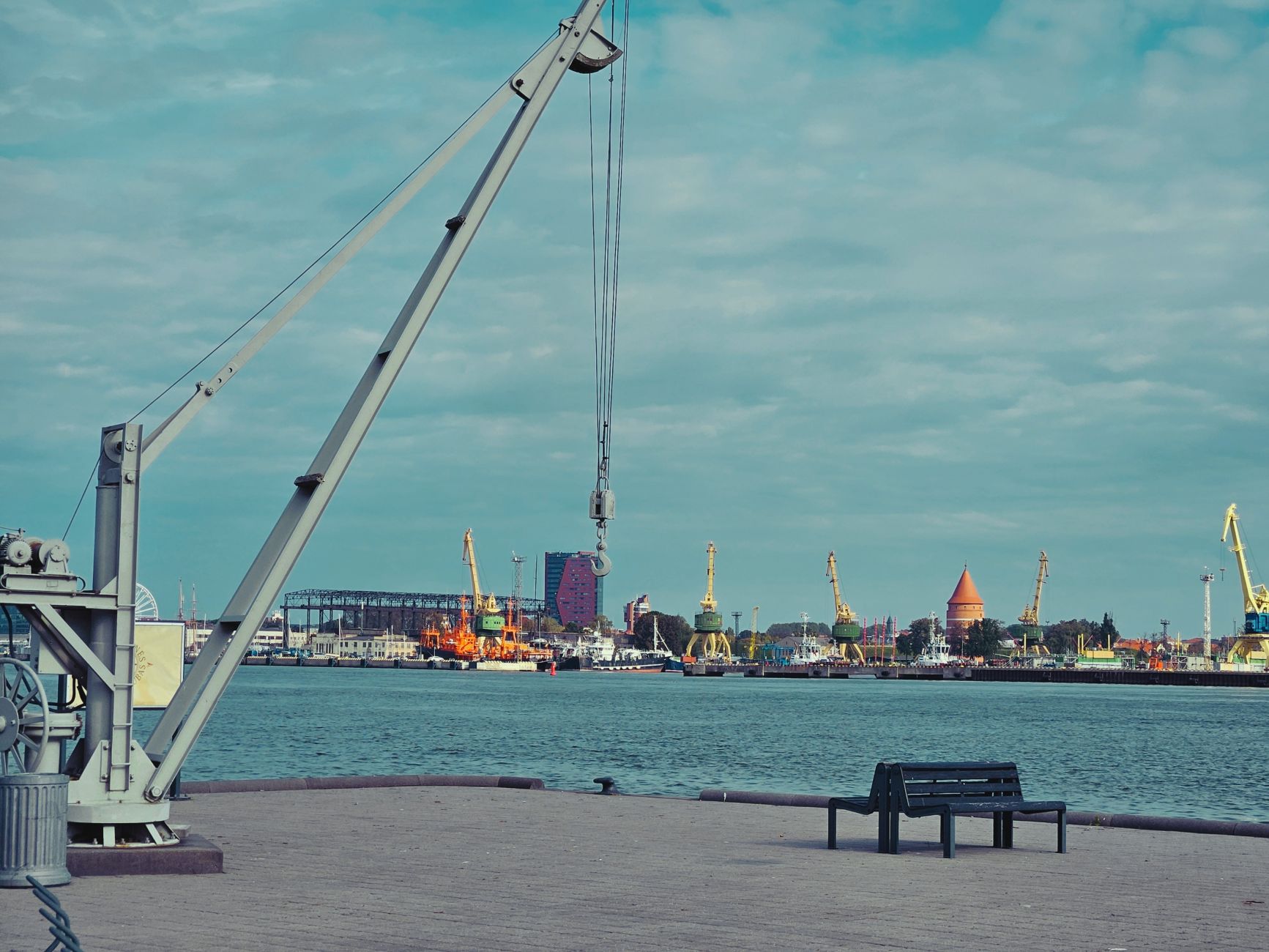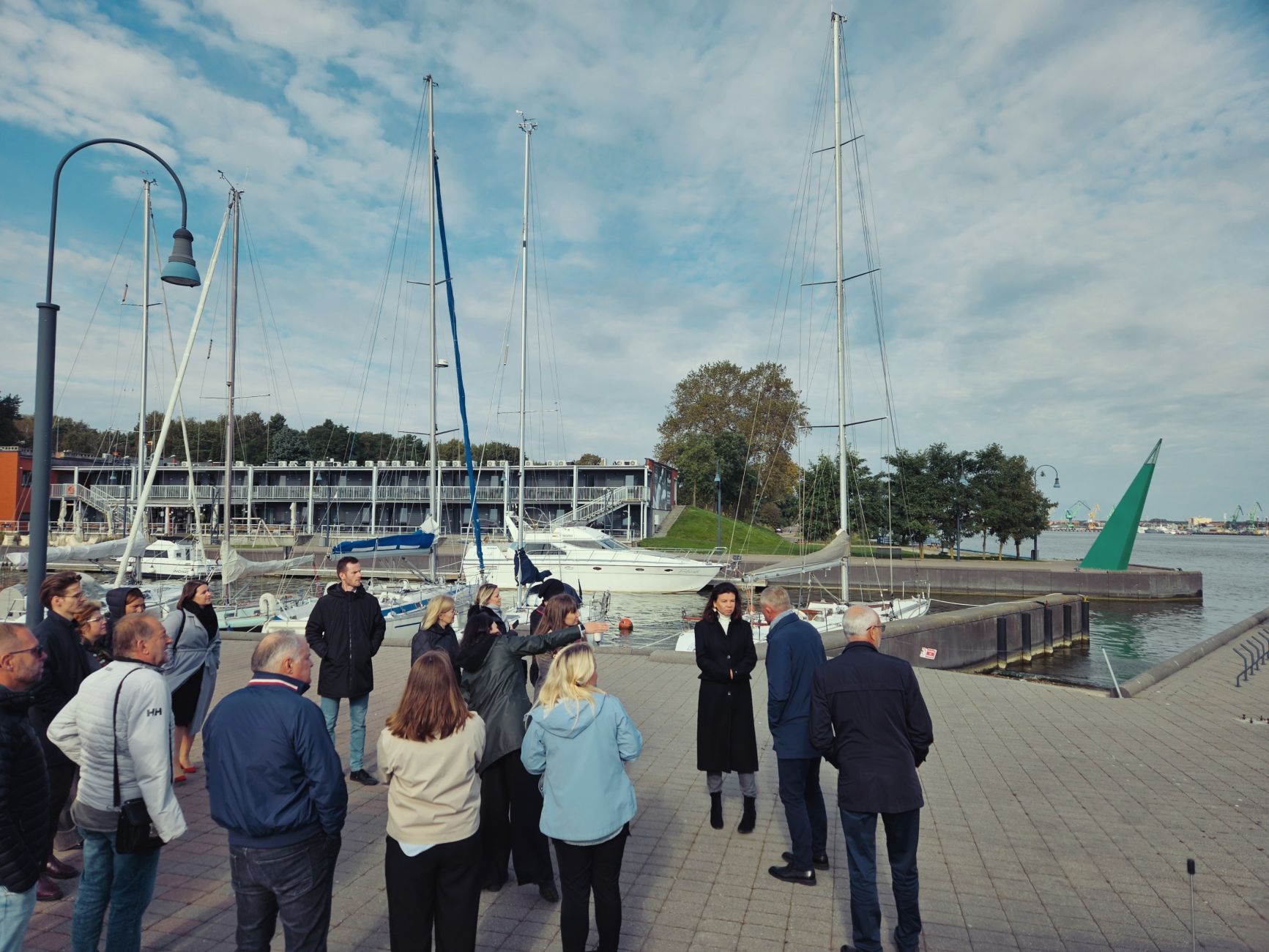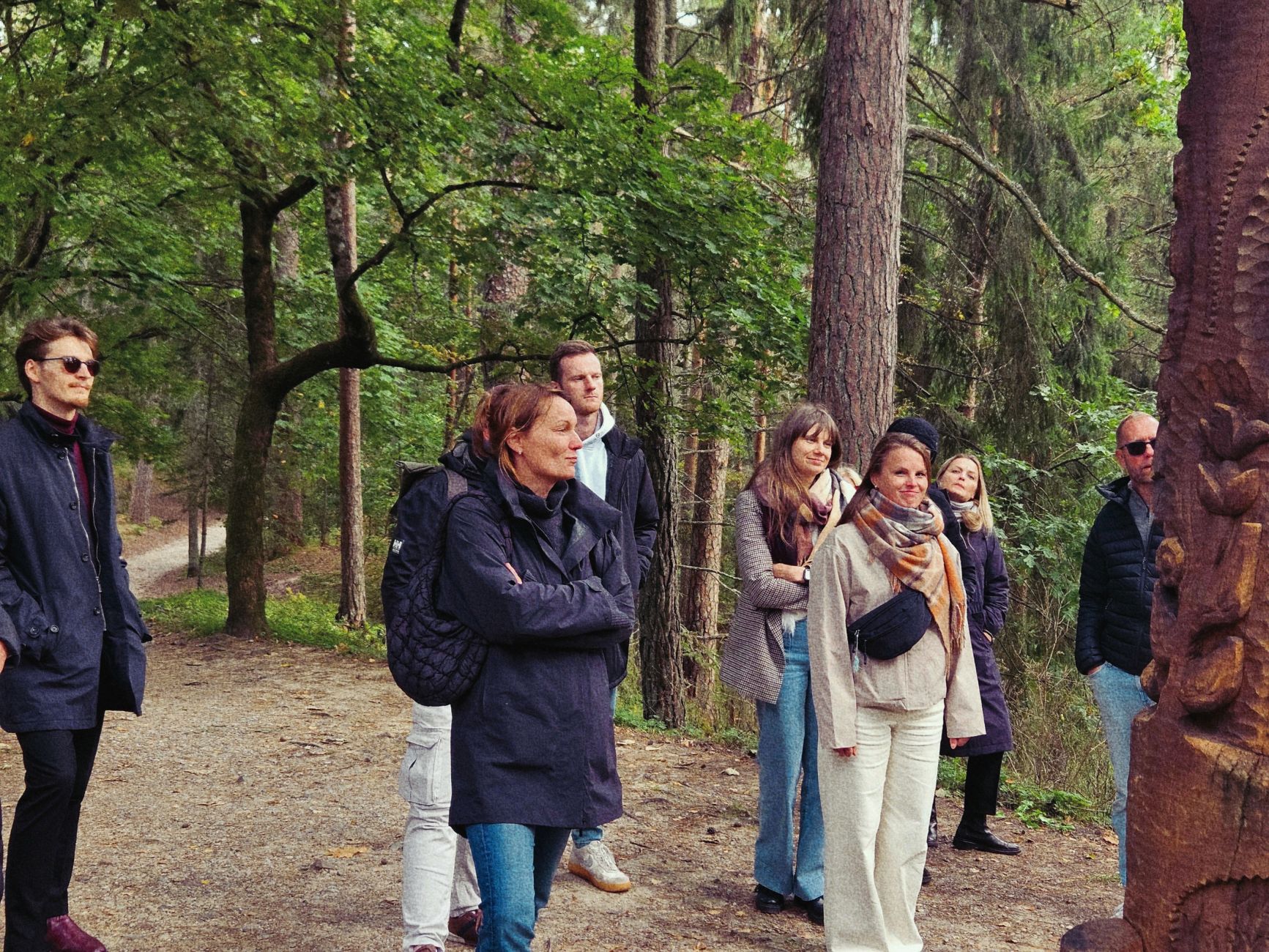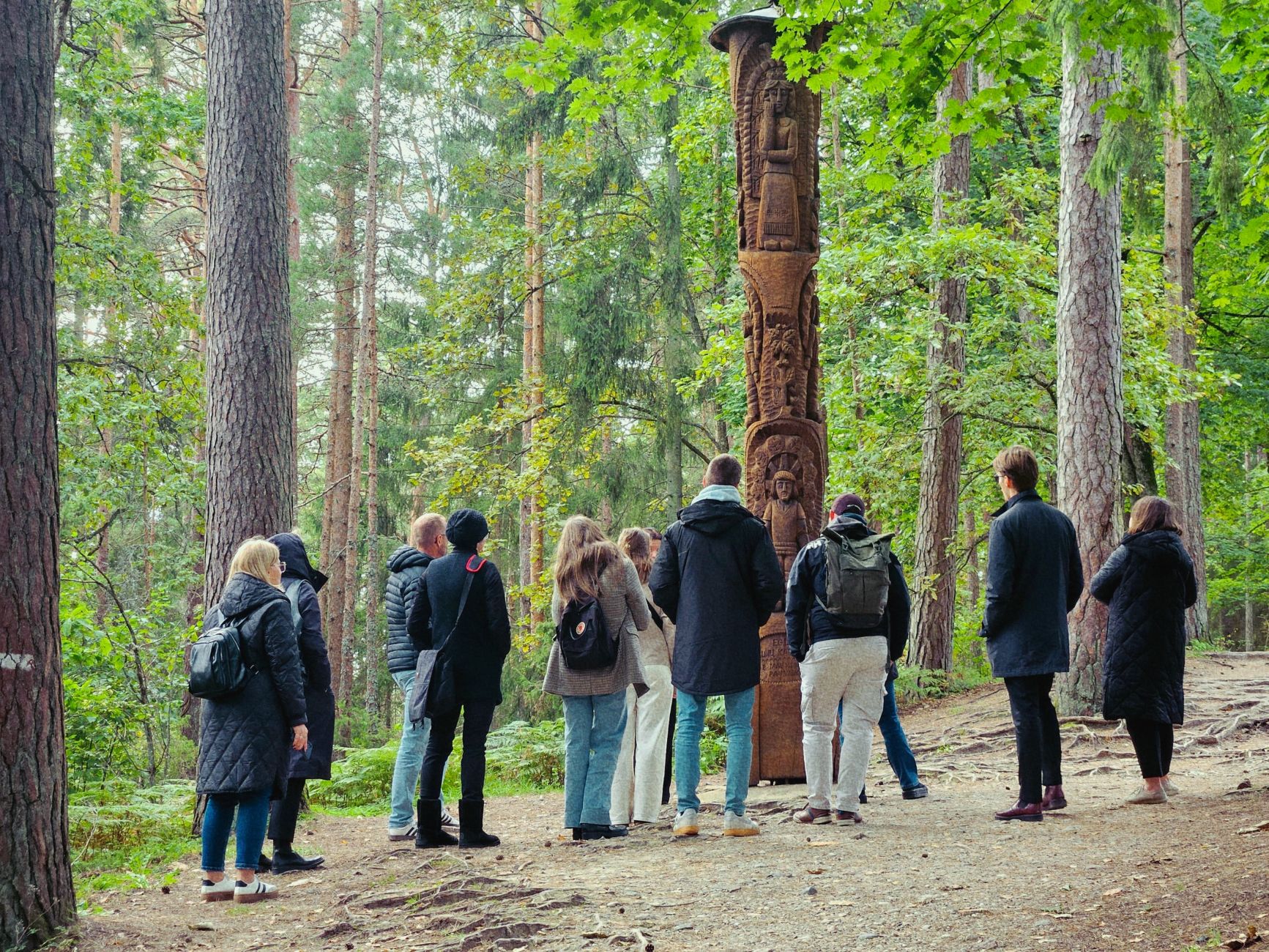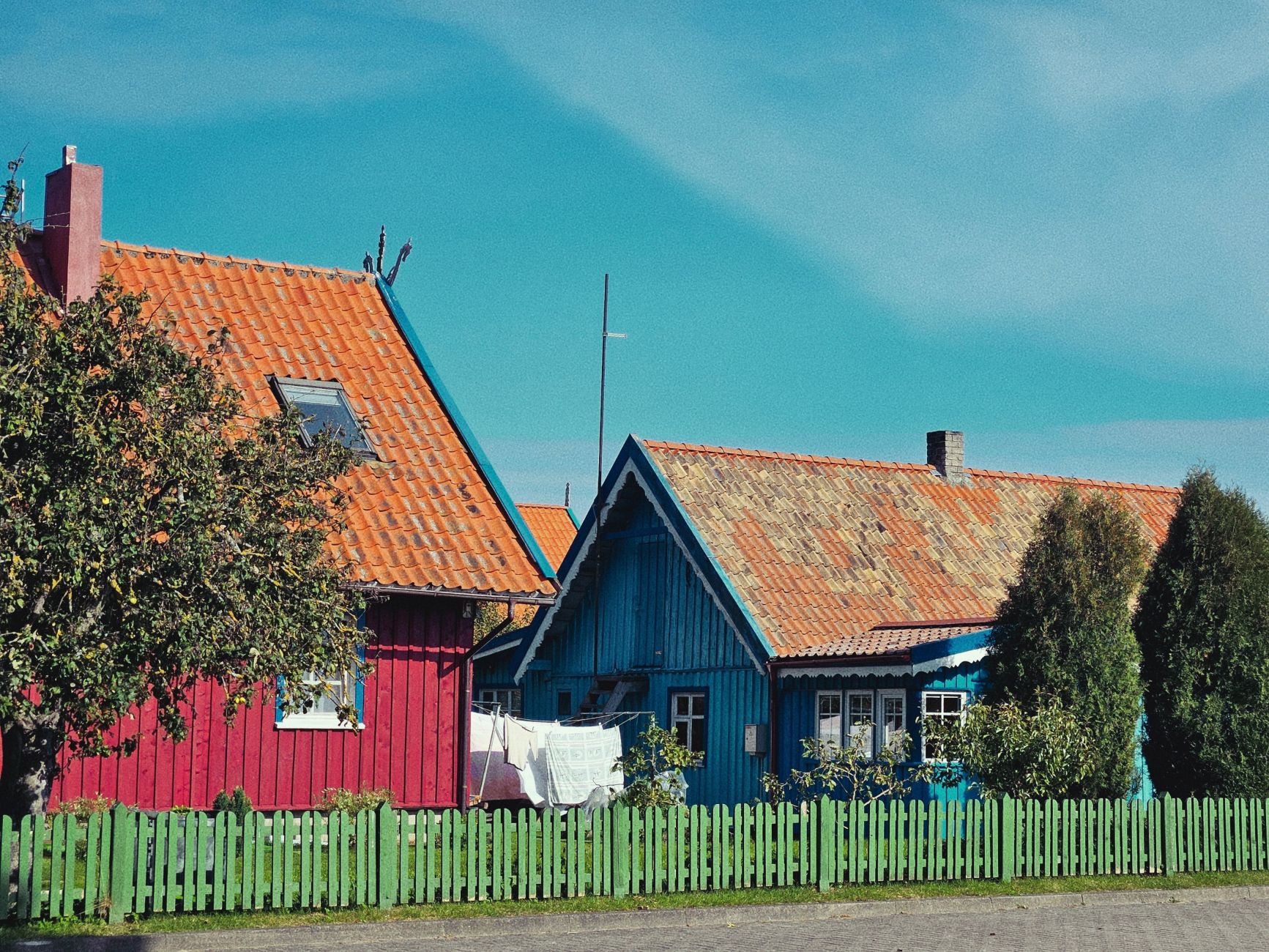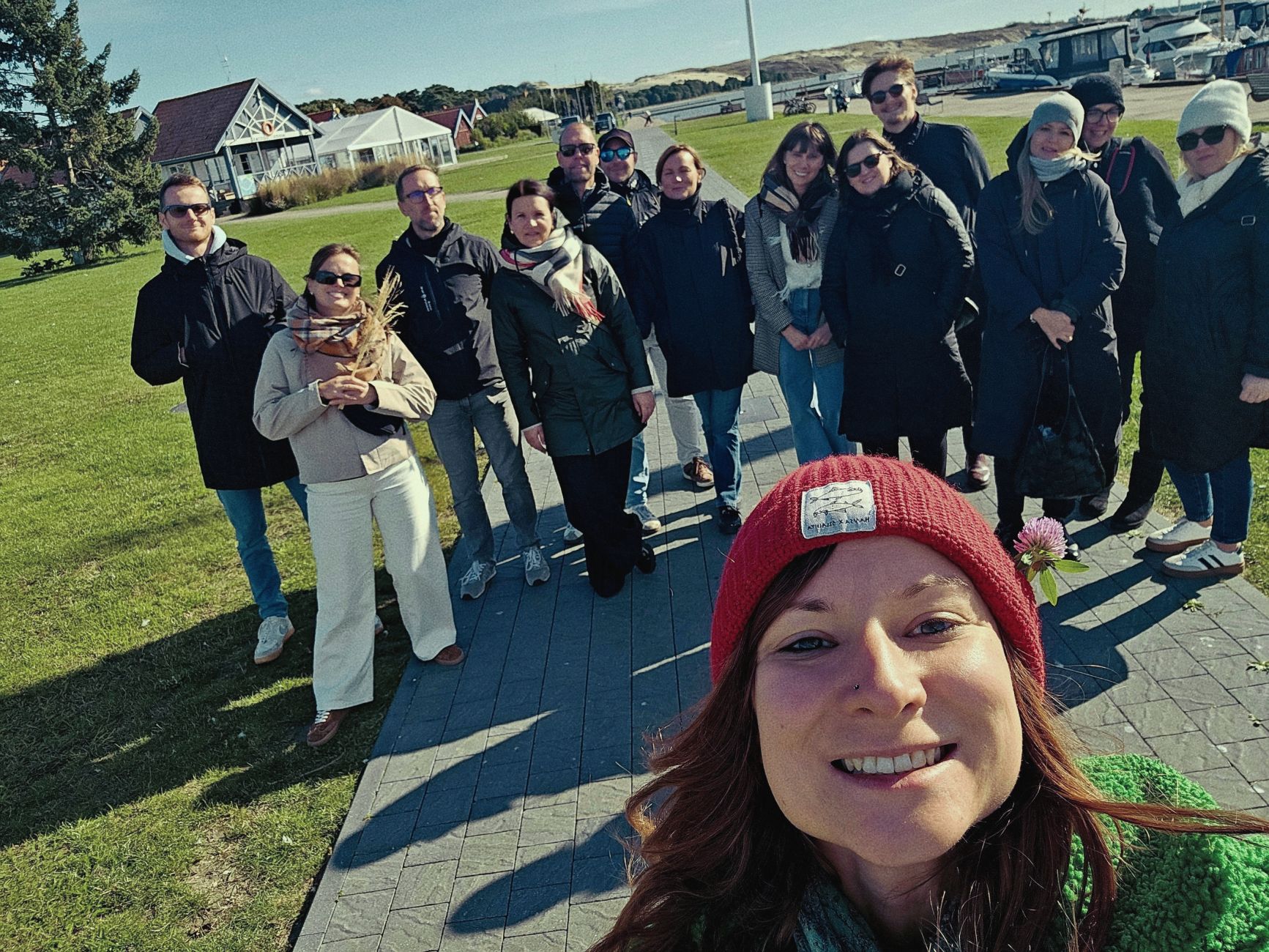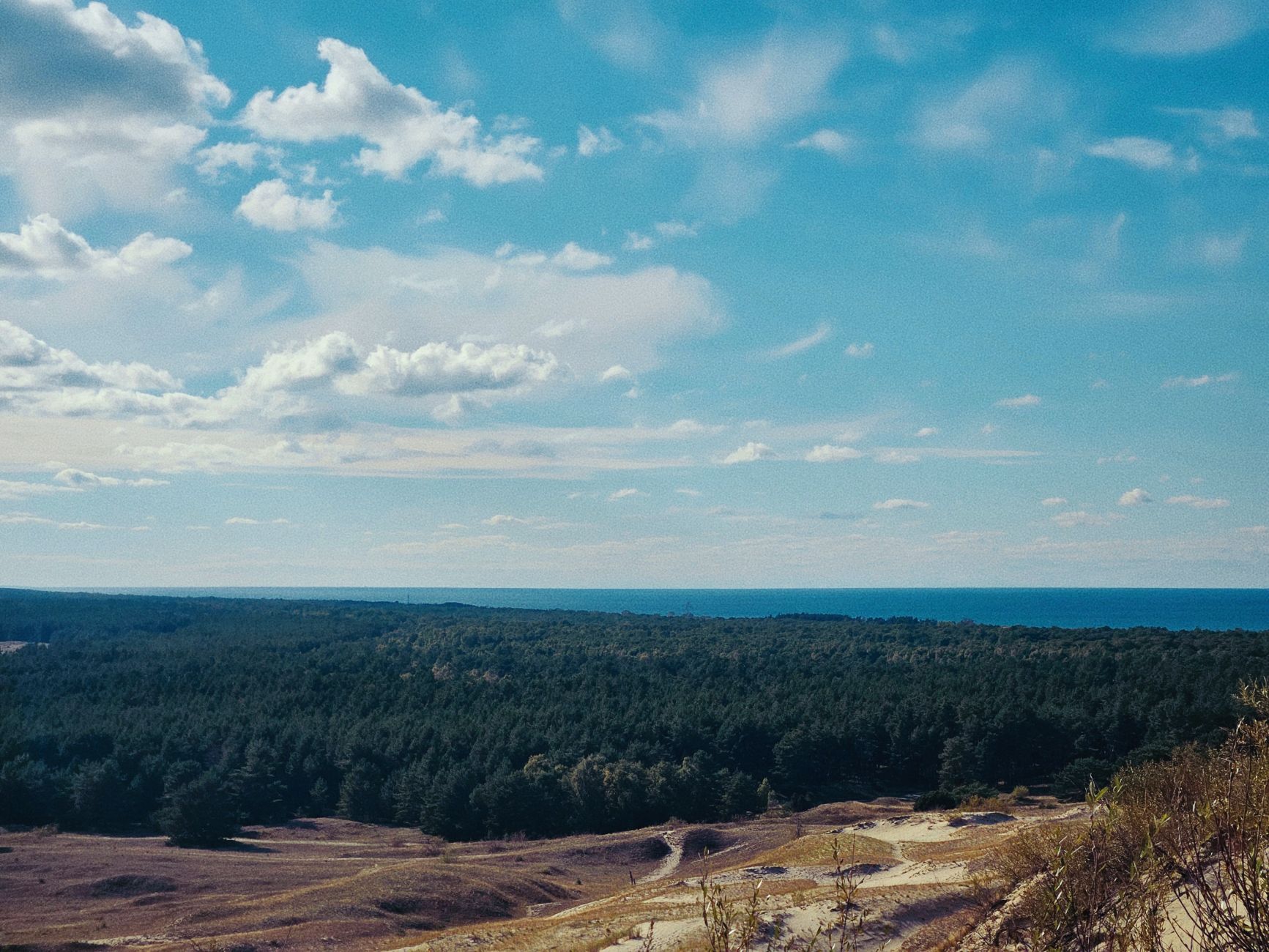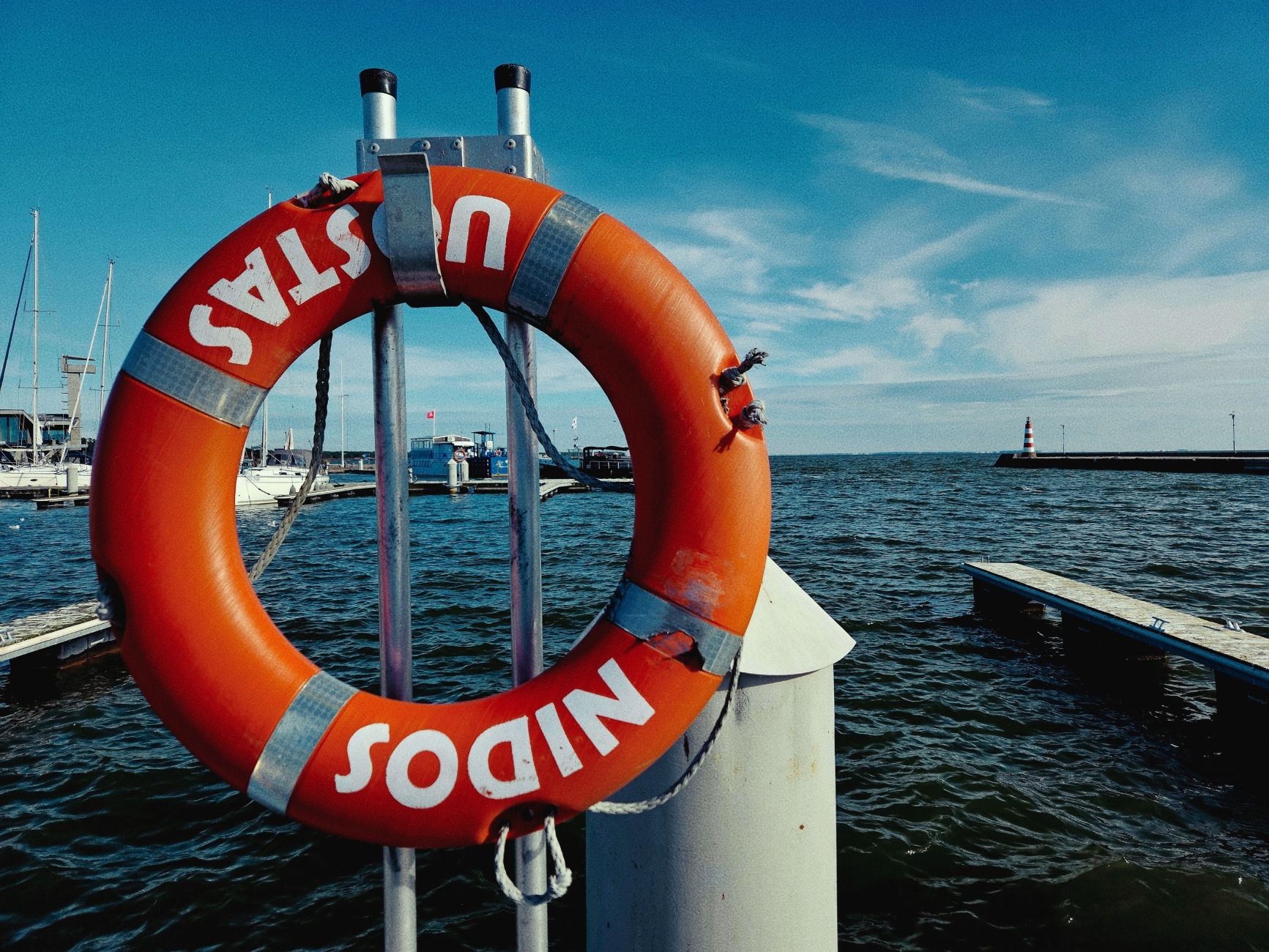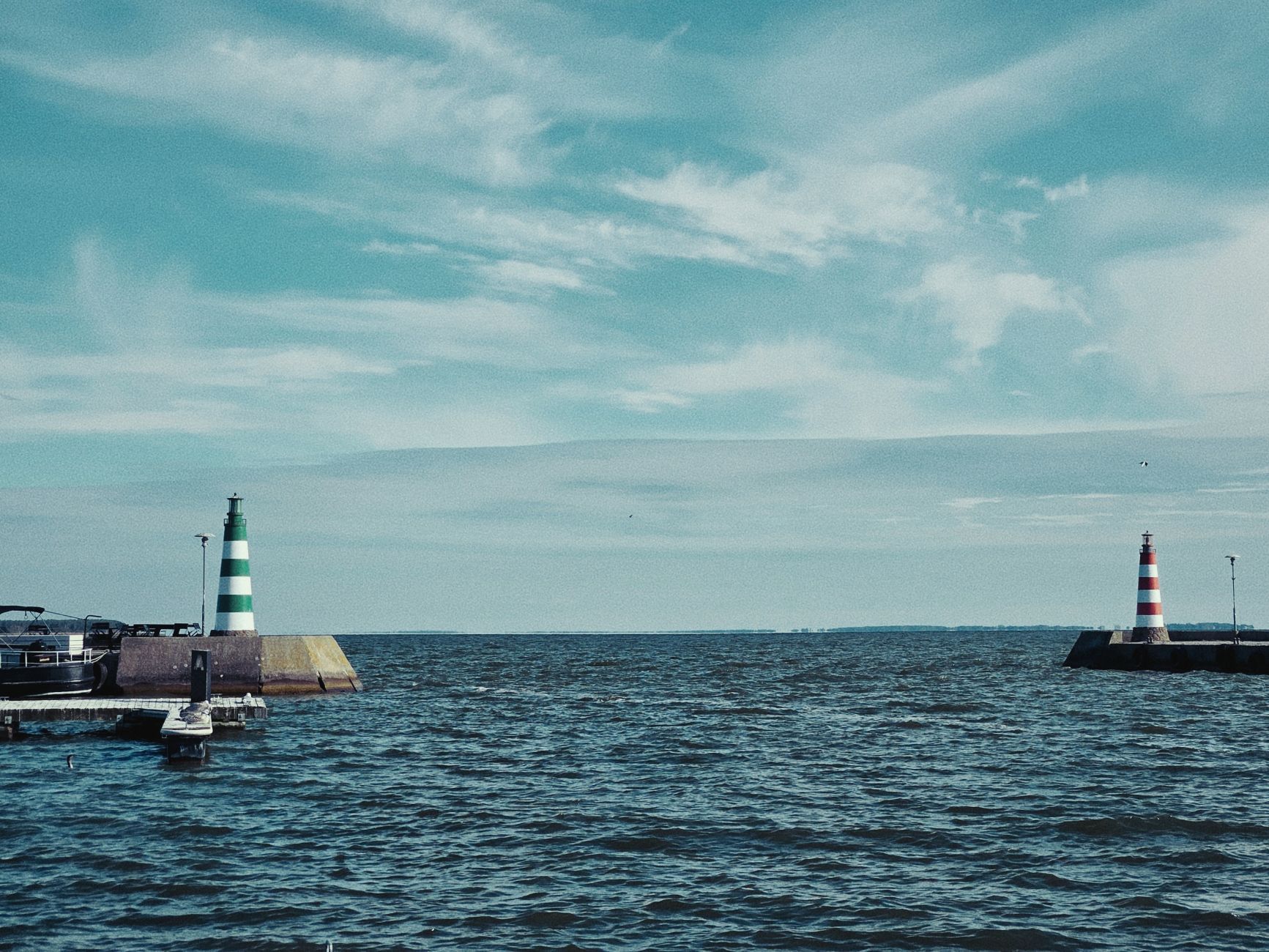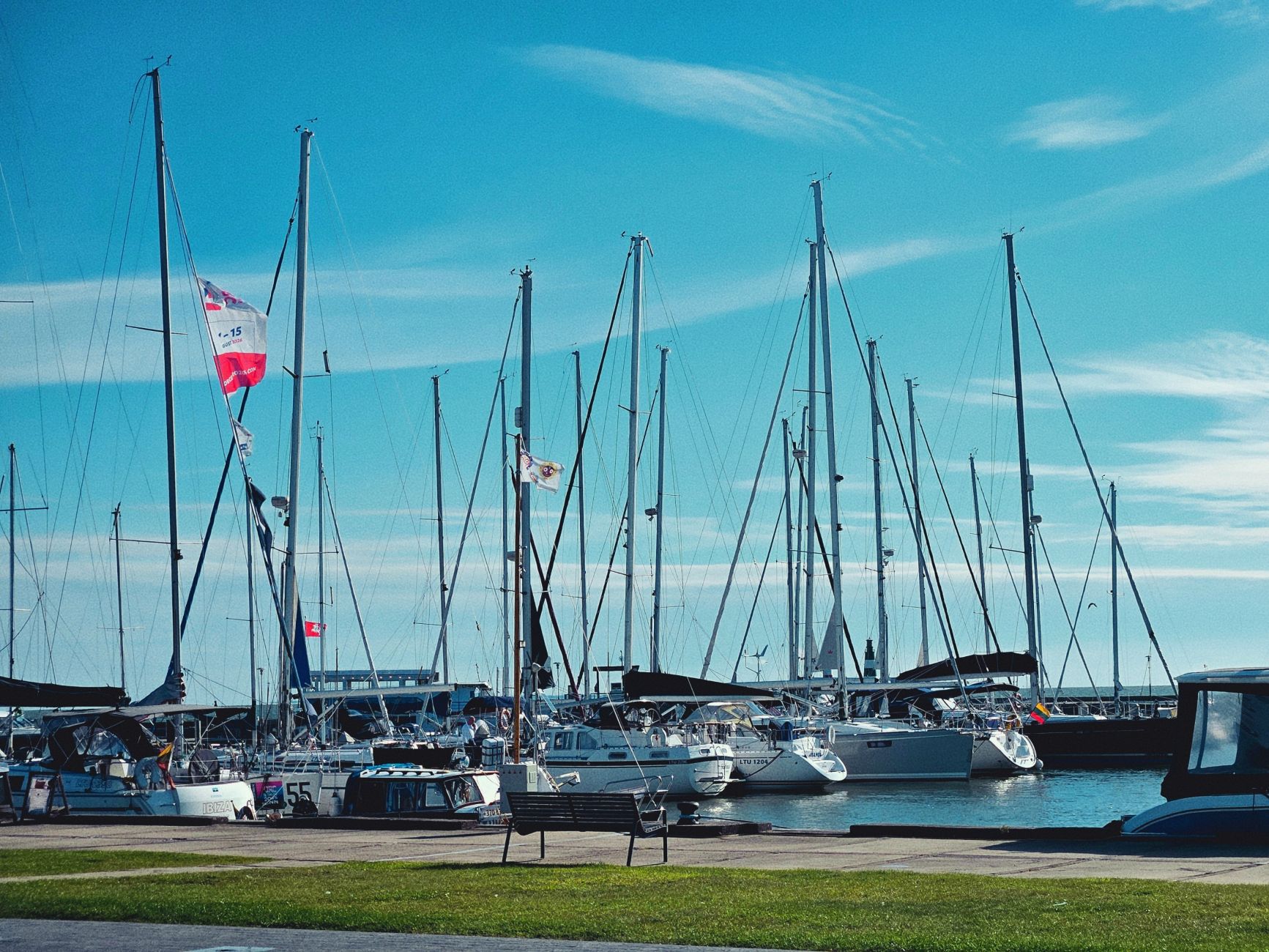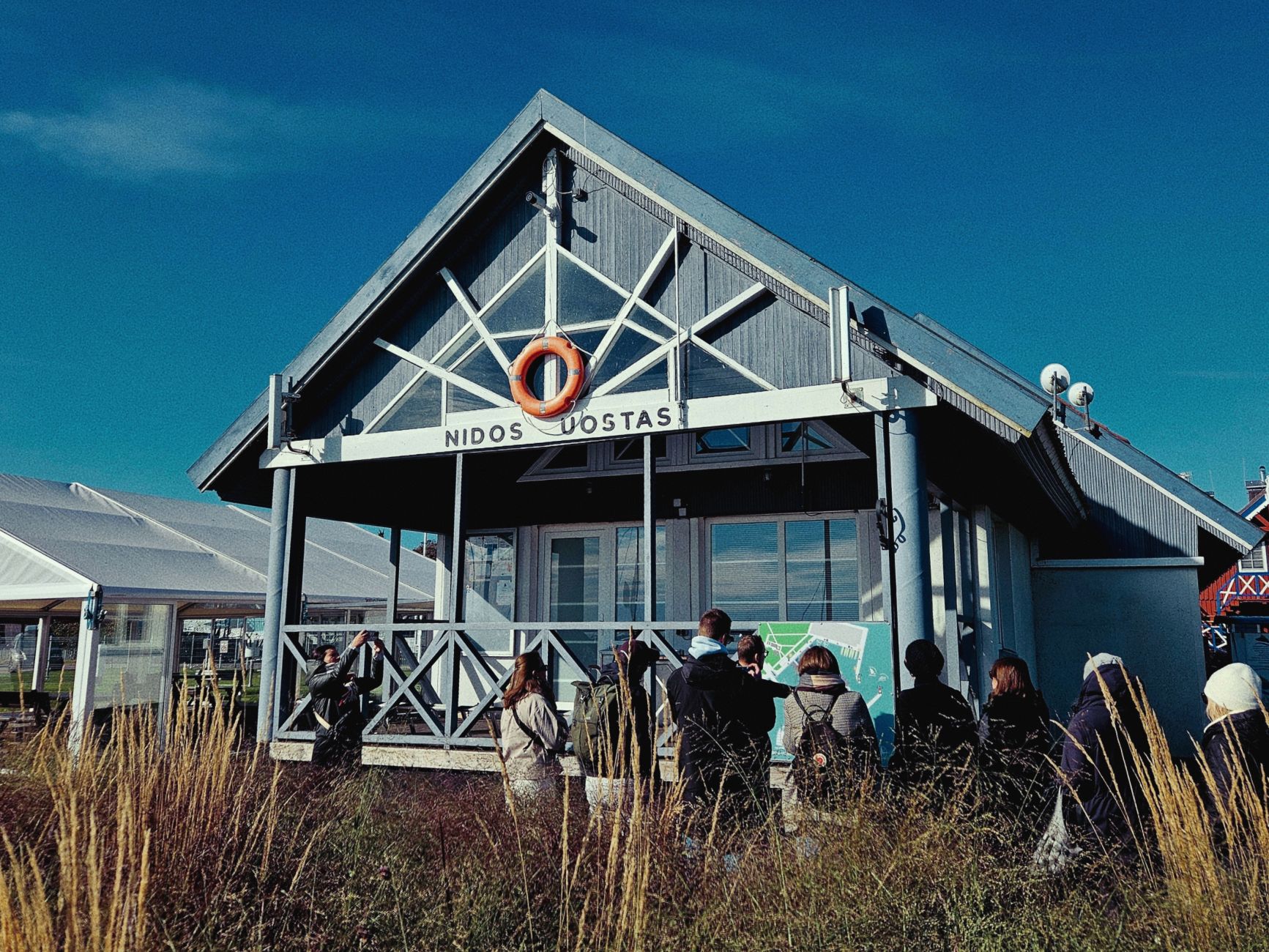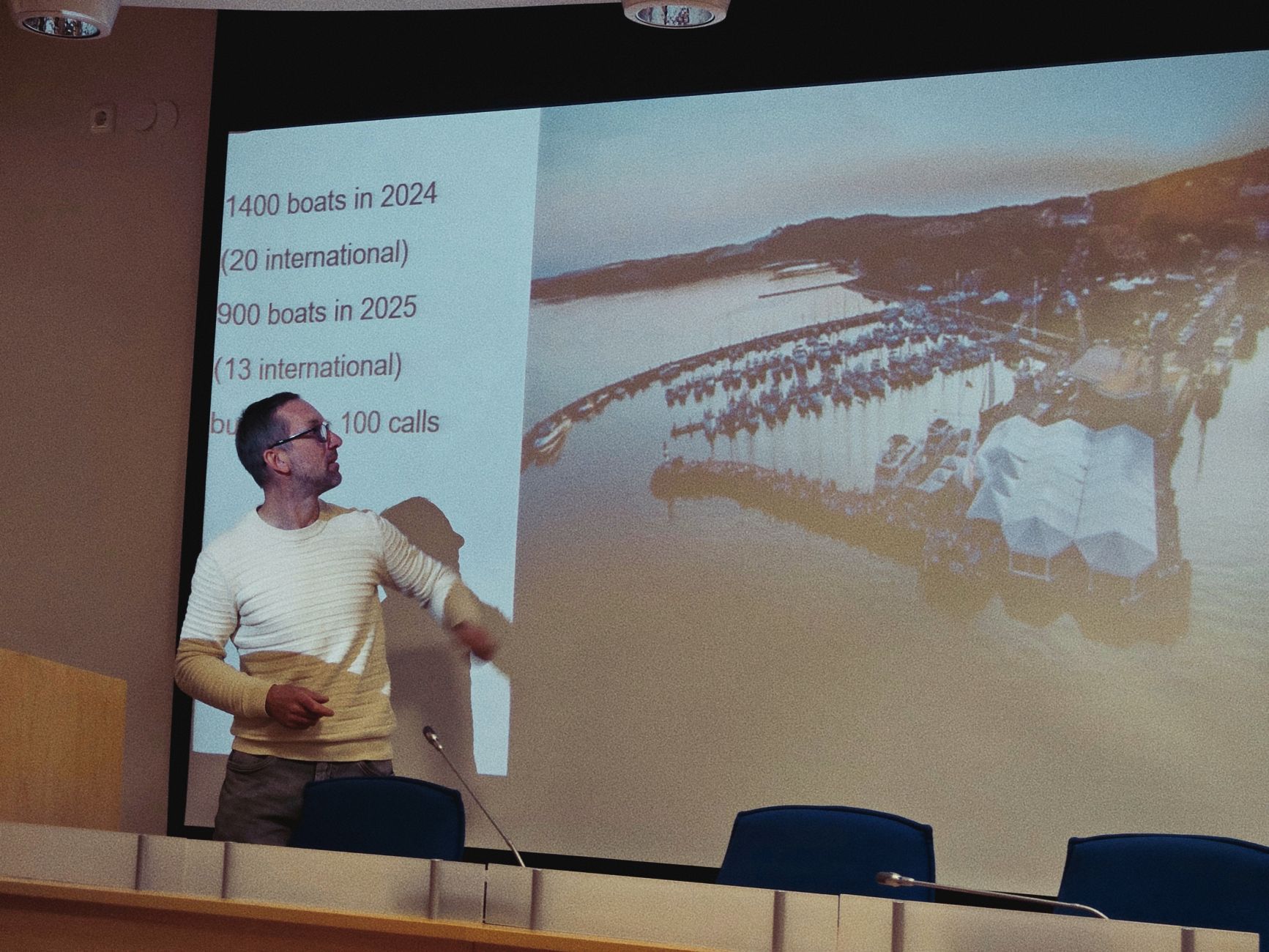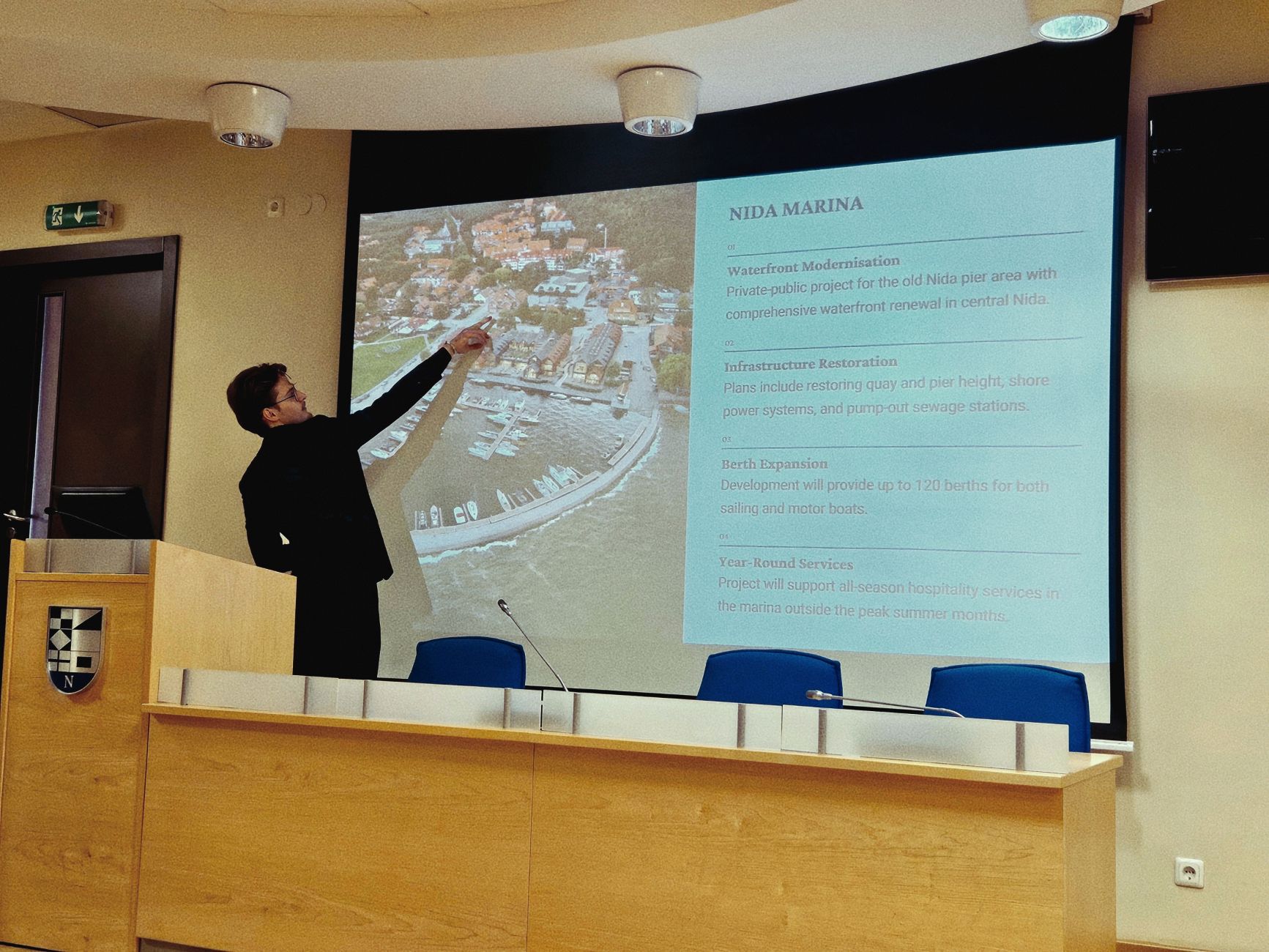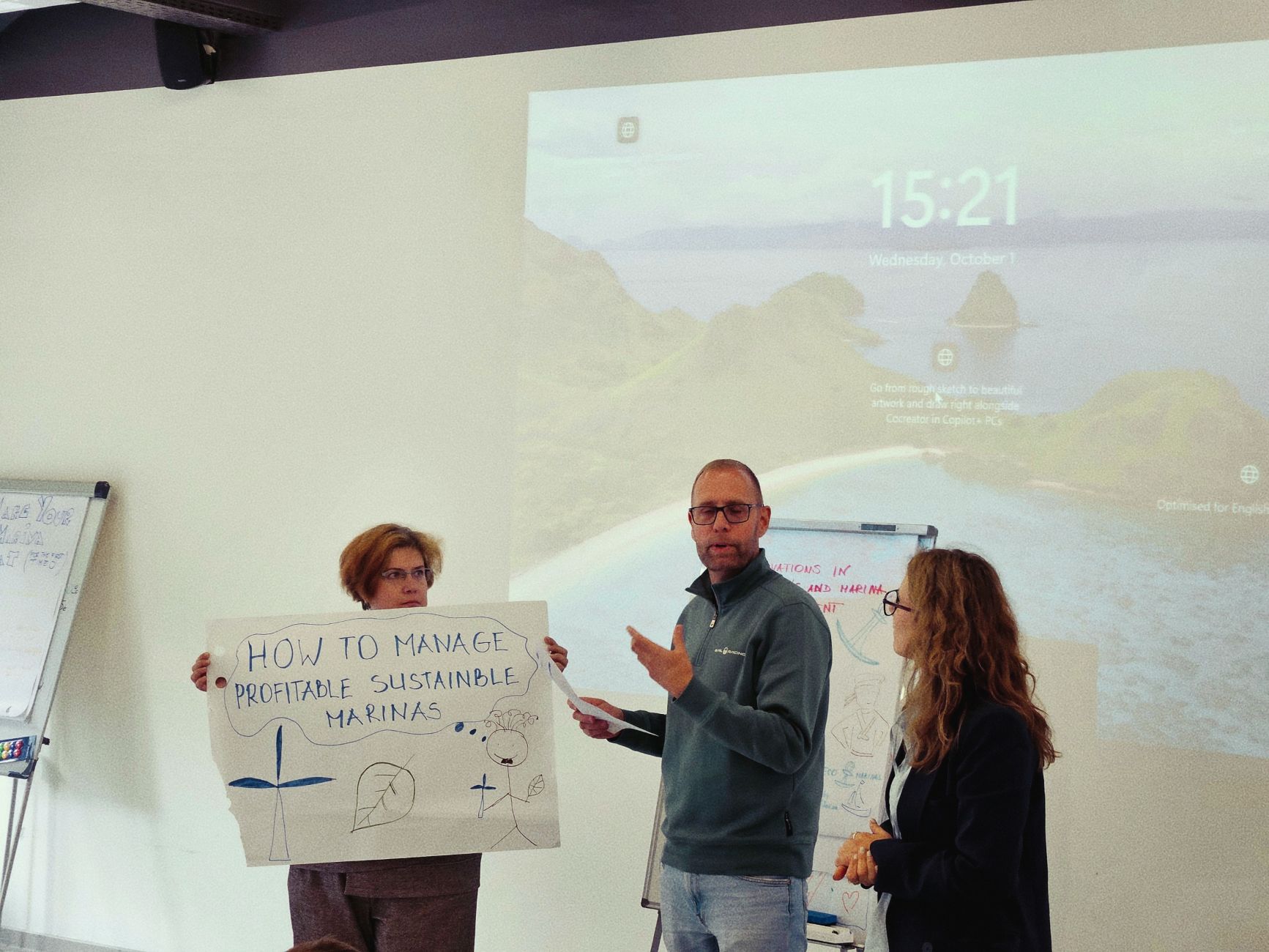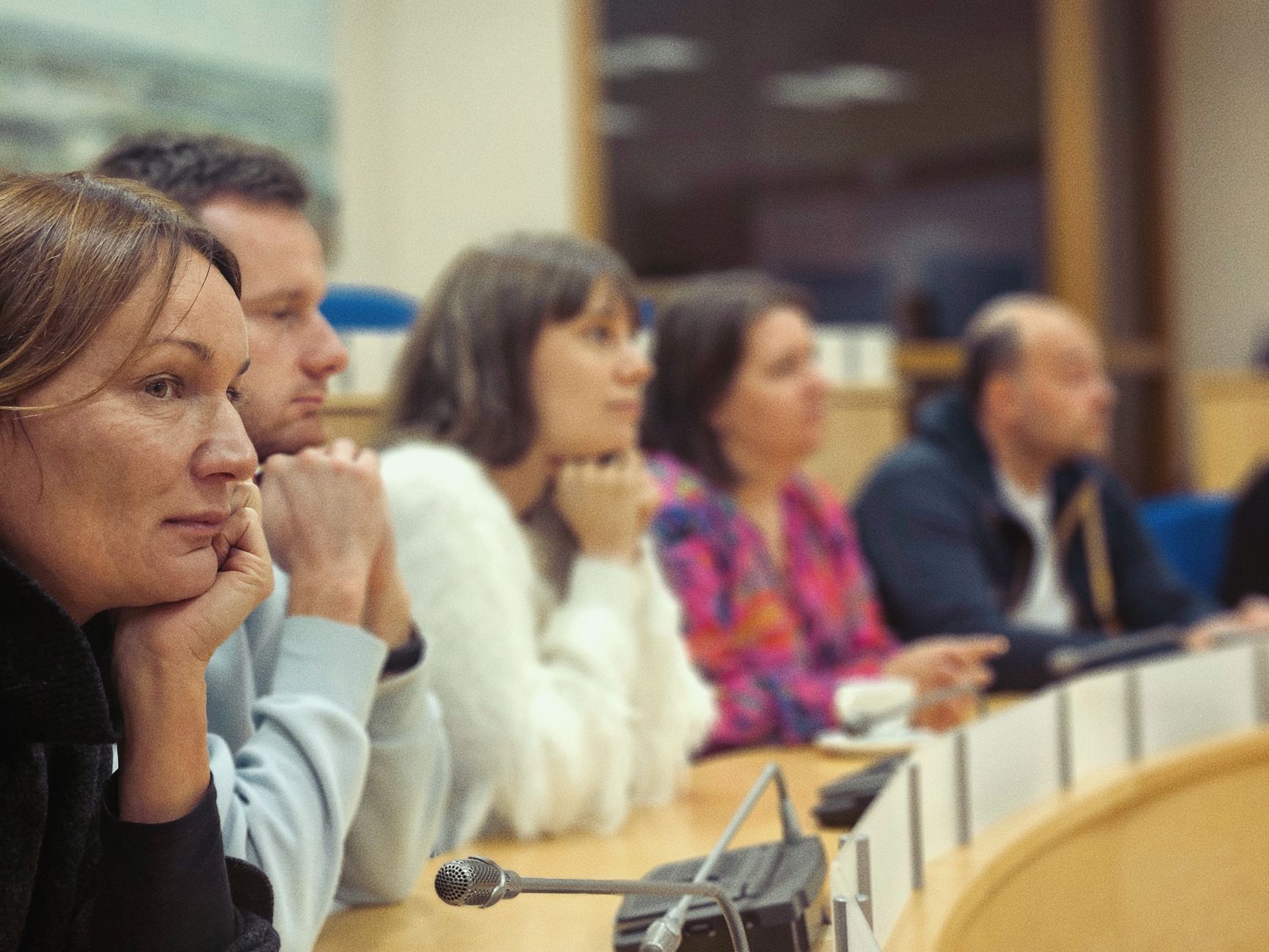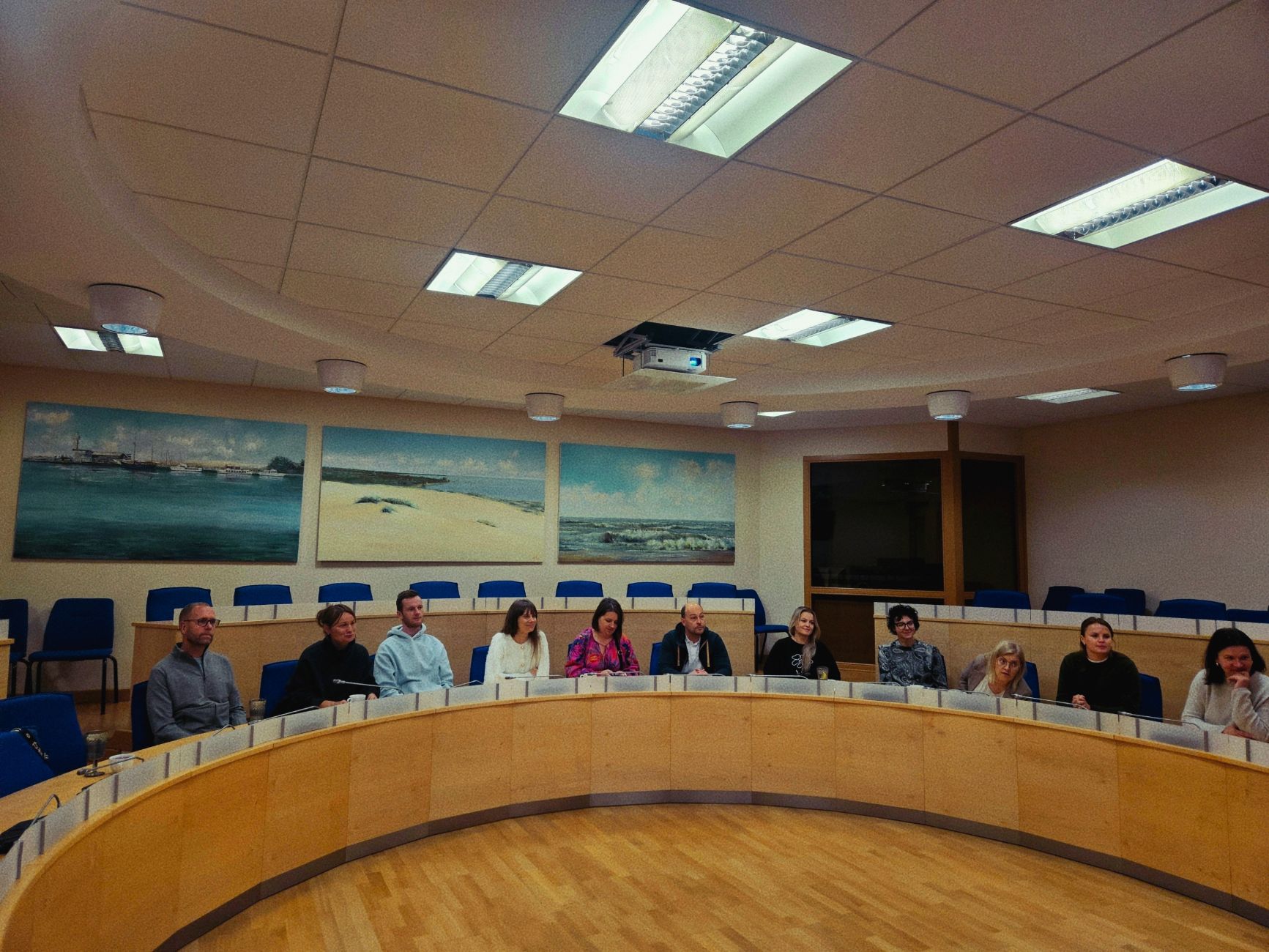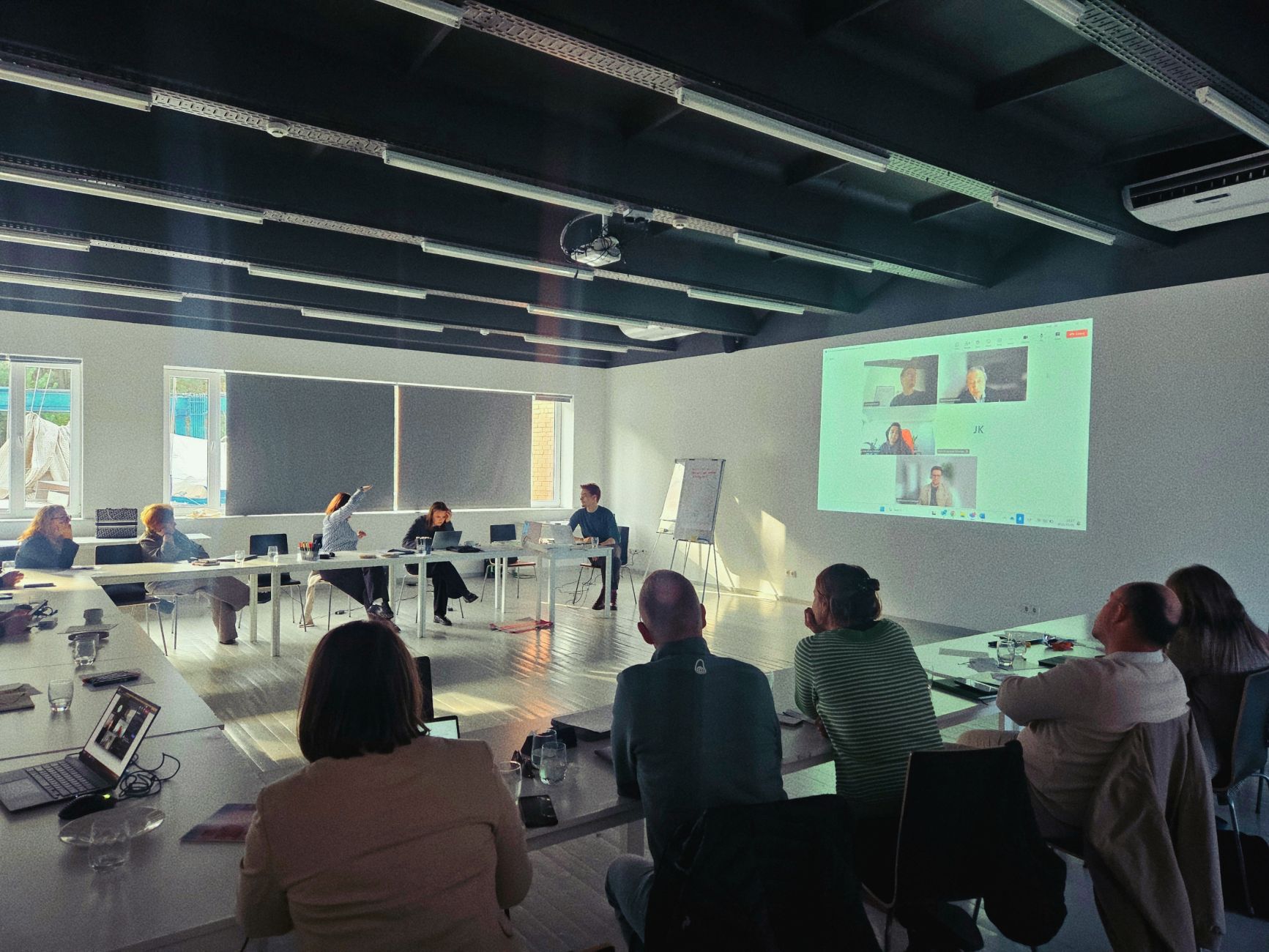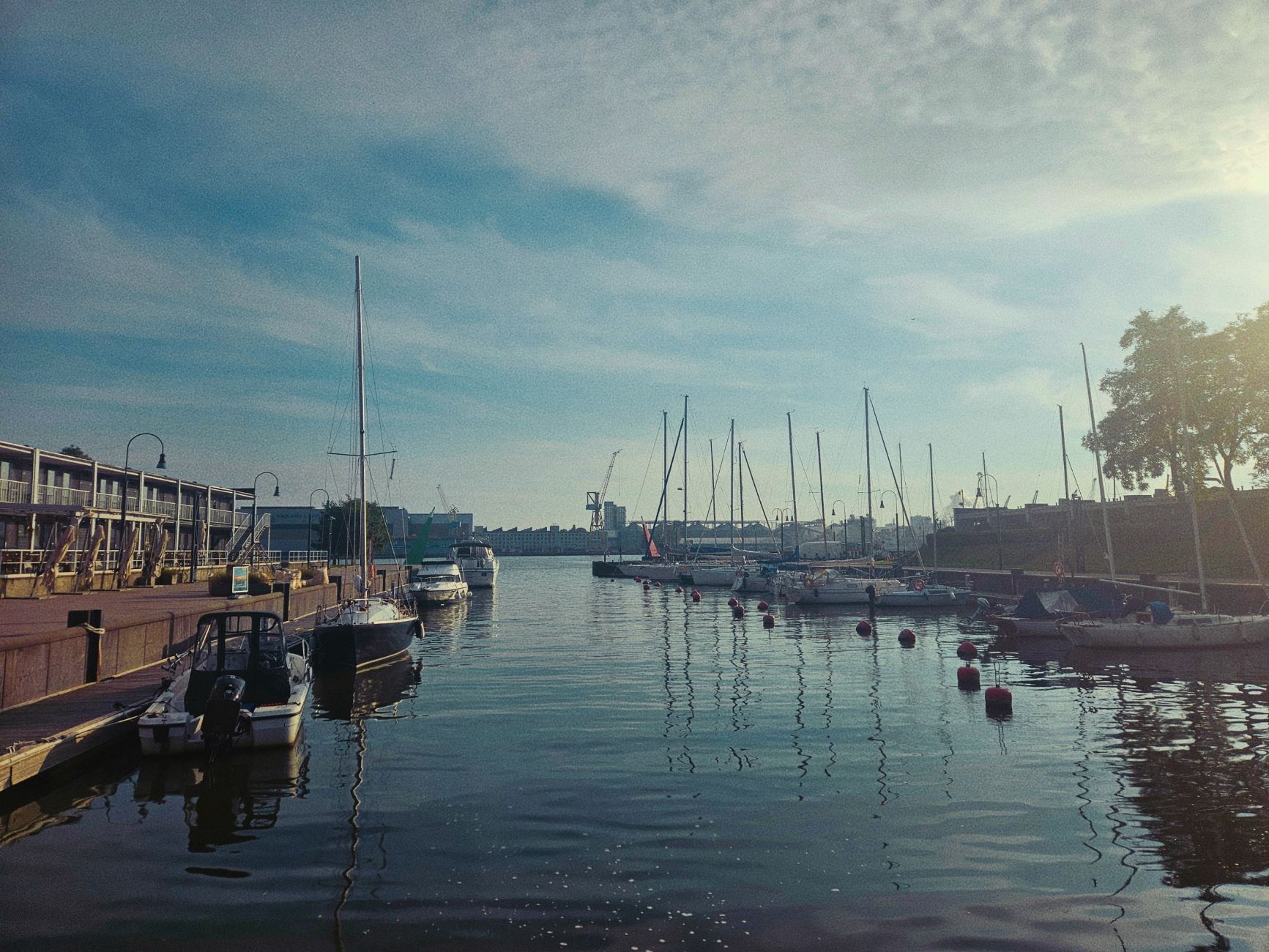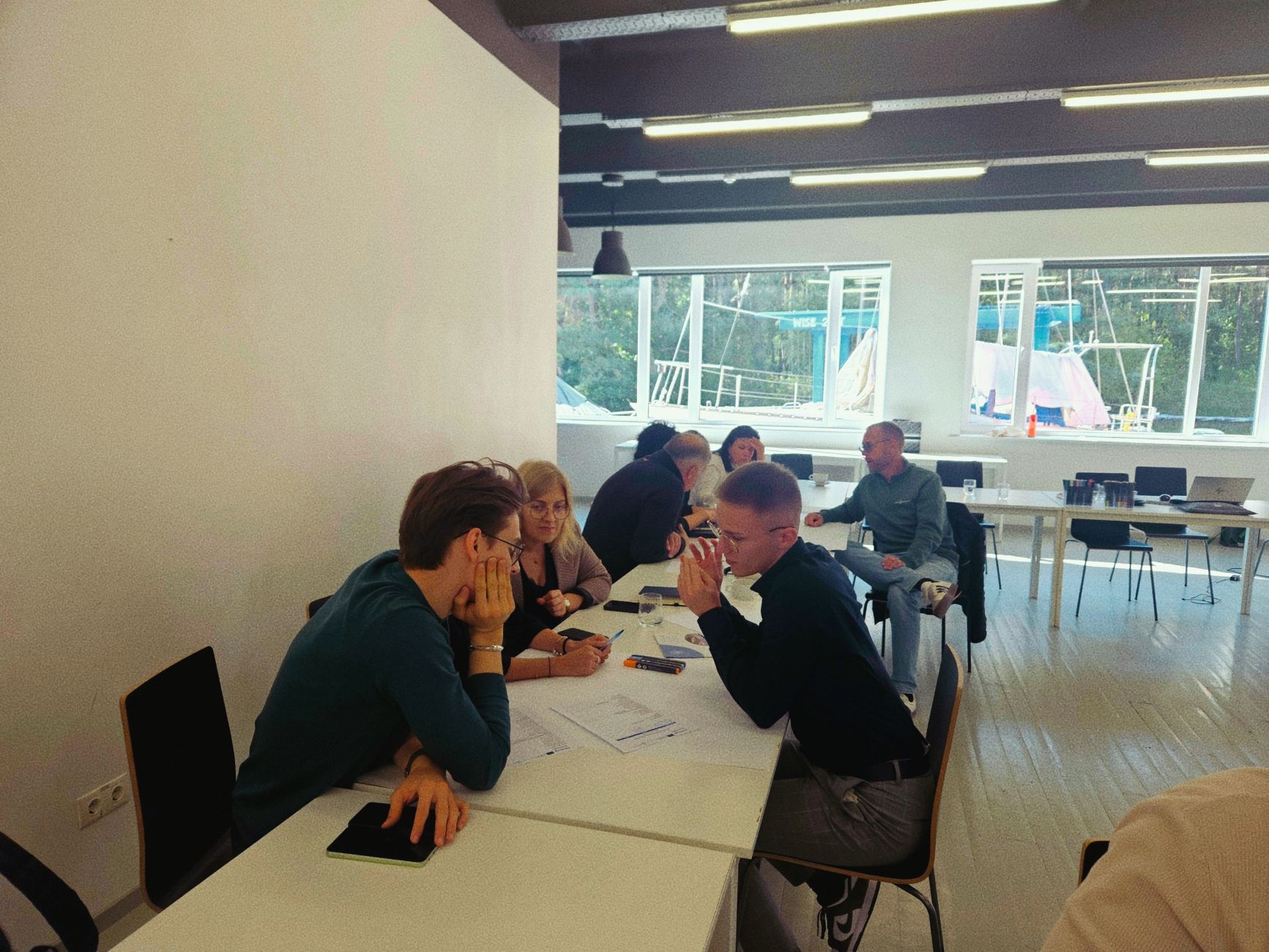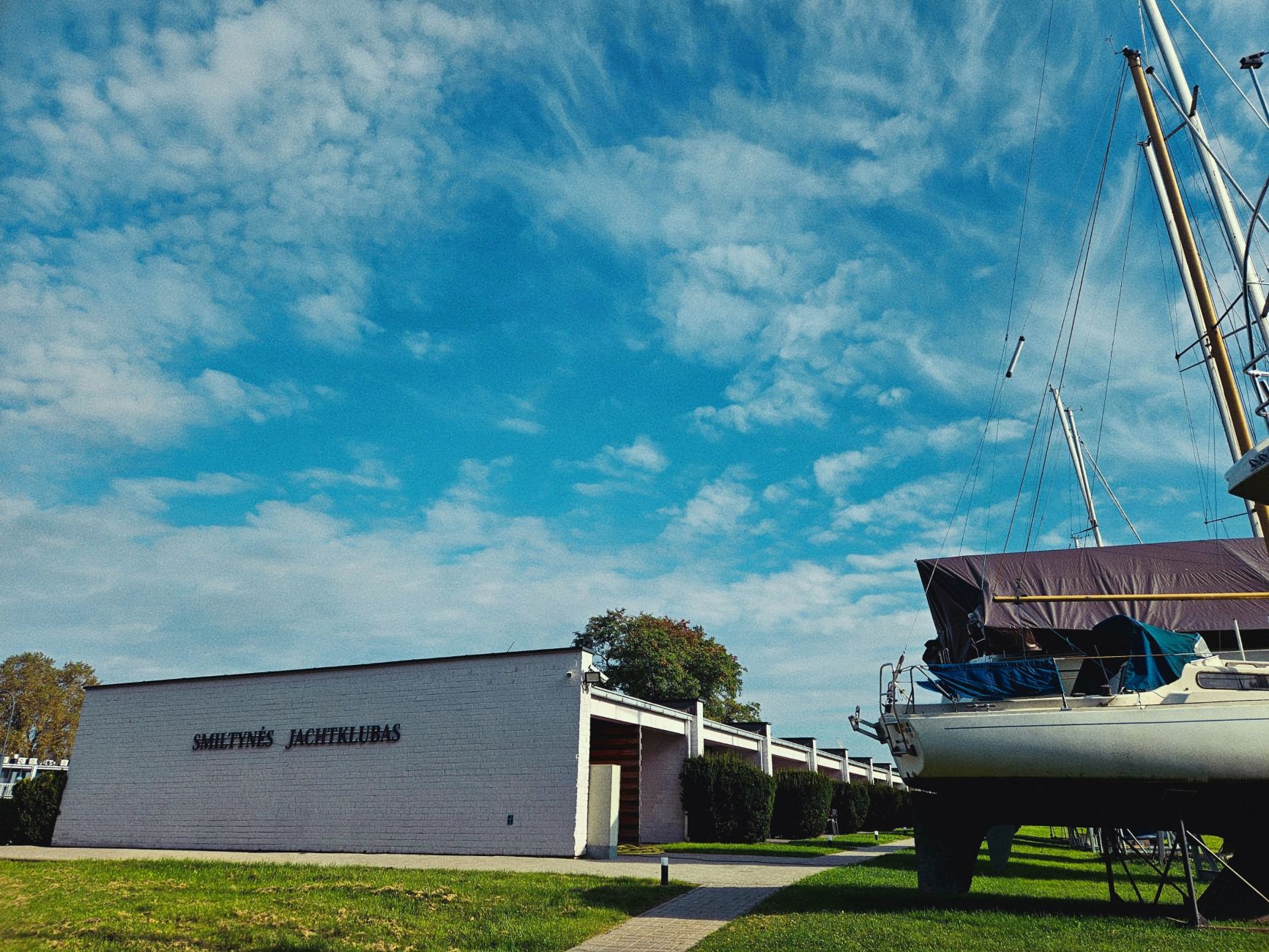ECOMARINAS - Study Visit in Klaipeda and Nida: Marinas as Living Laboratories, Dunes as Teachers
ECOMARINAS project is a cross-Baltic partnership with a practical mission to raise environmental standards in marinas by providing marina managers with know-how on how to create places that collect less pollution, spread fewer invasive species, and return cleaner water to the sea. As part of the project’s study visits the project team visited Lithuania’s Curonian Spit. The purpose of the visit was to verify what local marinas actually have and need, look for ways to translate benchmarking into checklists and habits and discuss possibilities for a pilot investment in Neringa municipality. Between the sailing boats and the dunes, we were there to look for ways to make good intentions measurable.
The first day of the study visit begun in Smiltynė Yacht Club with practical discussions on how to run marinas so that they keep people safe, boats tidy, and nearby waters vibrant with life. On the second day we travelled to Nida, climbed the Parnidis Dune overlooking the Valley of Death and appreciated the breathtaking views that reminded us what we are here to protect. Between those two horizons - sailing boats in marina and dunes - our visit unfolded.
Learning by doing: from marina infrastructure to workshop innovation
First day was dedicated to hands-on workshops and cross-sectoral discussions about marina management with local stakeholders. Participants visited Smiltynė Marina for an on-site observation and discussion of its facilities. The visit included an overview of the two basins for smaller motorboats and yachts, monitoring stations for water quality, and an experimental site for invasive species monitoring. Participants were also shown the crane used for boat removal, the washing site, and the marina’s recycling station.
The workshop “How to Design Workshops for Marina Managers” conducted by representatives of Klaipėda University demonstrated how traditional pedagogical approaches can address environmental challenges. Participants divided into four groups, each developing workshop concepts for marina managers. The exercise emphasized the importance of tailoring solutions to local contexts while ensuring practical outcomes like action plans and communication tools.
The Invisible Invasion: understanding biofouling and invasive species
Invasive non-indigenous species (NIS) represent a serious threat to the ecological integrity and water management of the Baltic Sea, particularly in coastal and harbour environments. The semi-enclosed nature of marina basins increases the risk that both organisms and biofouling detach and accumulate, facilitating local establishment and spreading. Recreational boating plays a pivotal role in the
spread of NIS through hull biofouling, internal water systems, and transfer on ropes or anchors.
Common fouling organisms like the bay barnacle (Amphibalanus improvisus) and blue mussel (Mytilus trossulus) can harbor invasive species in crevices and algae.
Even more concerning are cryptic invaders like Gammarus tigrinus (an amphipod crustacean) and Rhithropanopeus harrisii (the estuarine mud crab), which are difficult to detect but can dramatically impact local food webs through intense
competition, a high reproductive rate, and aggressive behaviour.
HELCOM emphasizes that shipping and recreational boats are key vectors for NIS, recommending implementation of the OSPAR/HELCOM Rapid Assessment Survey protocol in ports and marinas, alongside annual surveys and enhanced monitoring of littoral zones using molecular tools and citizen science. Regardless of that in majority of Baltic marinas there are no significant initiatives to address invasive species, despite known risks from boating activities.
During the site visit to Smiltynė Jachtklubas project partners had an opportunity to examine a monitoring station and the experimental site designed by scientists from Klaipėda University to track non-indigenous species. The goal is early detection and awareness before a species establishes and reshapes local habitats.
Marina managers must now grapple with this dual challenge: maintaining clean hulls for operational efficiency while preventing species transport. Traditional antifouling paints release biocides that harm native species, while inadequate hull cleaning enables invasive species dispersal. The solution requires integrated biofouling management combining physical cleaning, environmentally friendly antifouling alternatives, and rigorous monitoring.
Nida: dunes and a UNESCO landscape
The Curonian Spit is a unique and vulnerable, sandy and wooded landscape. Shaped over time by the combined forces of the sea, wind, and human activity, i continues to evolve under their influence. Rich in both natural and cultural heritage, the Spit has preserved its social and cultural significance.
The Curonian Spit represents a living textbook of coastal dune geomorphology. This narrow peninsula showcases an extraordinary variety of dune types, each telling its own story of environmental adaptation and human intervention: parabolic dunes (old-growth forest of Juodkarante), grey dunes in Naglių Reserve (also called dead dunes), the artificial protective dunes along Preila sea side beaches, and afforested dunes that dominate much of the landscape. And finally, the drifting dunes (Parnidis) that continue to migrate across the landscape - including the spectacular moving formations near Nida that can reach heights of 60 meters and advance several meters annually, creating the phenomenon of "drunk forests" where trees tilt and bend under the pressure of advancing sand.
The Living Legend of Environmental Stewardship
The second day's journey to Nida opened with a welcome from the Mayor of Nida and a presentation on investment plans and new private marina development. These developments must balance economic opportunity with environmental protection - a challenge made more poignant by the region's UNESCO World Heritage status.
The Curonian Spit gained UNESCO recognition in 2000 as an “outstanding example of a landscape of sand dunes that is under constant threat from natural forces (wind and tide). After disastrous human interventions that menaced its survival, the Spit was reclaimed by massive protection and stabilization works that began in the 19th century and are still continuing to the present day.”
This 98-kilometer peninsula, shared between Lithuania and Russia's Kaliningrad region, represents 5,000 years of interaction between sea, wind, and human activity. The dunes reaching 50 meters in height are Europe's tallest dunes, shaped by both natural forces and human intervention.
Walking among these towering dunes, the delegation encountered the legend of Neringa - a tale that resonates deeply with contemporary environmental challenges. According to local folklore, a giant girl called Neringa, blessed by the goddess Laima used her strength and compassion to protect local fishermen from raging storms. She carried sand in her apron to create a protective barrier between the Baltic Sea and the Curonian Lagoon, forming the Curonian Spit. As the story continues, there came the day when giants began to abuse the Spit, thus infuriating the Dunes who revolted against them and began to bury their homes and settlements. The story concludes: "The giants, who have managed to stop the raging Dunes, still walk around this sandy land admiring the peace of the tamed Dunes. These giants are us. Our steps shape the face of the Curonian Spit, and careless movements can irreparably damage it."
This wisdom proves remarkably prescient. Between the 16th and 18th centuries, fourteen villages were buried by shifting sands after deforestation left the peninsula vulnerable. Only large-scale reforestation and dune stabilization in the early 19th century prevented total environmental collapse. Today's environmental challenges - eutrophication, invasive species, plastic pollution - require similar collective action and long-term thinking.
Technology scouting and a pilot for Neringa
Canadian company EM Fluids presented its Equilibrium Modulated Fluids (EMF) technology during an online meeting held as part of the study visit. EMF technology affects properties of polar liquids, such as water, on a large scale with minimal energy. This is achieved by introducing a subtle stimulus which triggers a cascading effect that propagates throughout the waterbody to a distance of up to 20 ha. The EMF devices are solar-powered, self-contained, and designed for low maintenance, making them suitable for applications such as lake remediation, sewage lagoons, and wastewater treatment. It is a non-chemical, non-mechanical solution that enhances water quality, reduces viscosity and surface tension, improves gas transfer, supporting oxygenation, pH stabilization, cyanobacteria suppression, and organic sludge digestion. The company has deployed over 80 projects globally.
For the Baltic Sea's eutrophication challenges, such technology appears ideally suited for vulnerable coastal areas like the UNESCO World Heritage Curonian Spit. However, although there are demonstrated beneficial effects of EMF, the scientific basis for its purported effectiveness is not clear, especially lack of quantitative assessment and systematic evaluation of the effectiveness of EMF technologies. Neringa's pilot investment could contribute valuable scientific knowledge, but implementation must include controls and independent oversight.
The ECOMARINAS project is co-financed by the Interreg South Baltic Programme 2021-2027 through the European Regional Development Fund and continues through June 2027, with eight partners across four Baltic countries. The project addresses urgent challenges including wastewater treatment, invasive species management, plastic pollution reduction, and climate adaptation. Success requires integrating technical innovation, international cooperation with local action, and scientific knowledge with public engagement.



